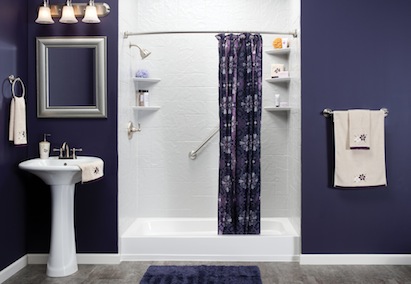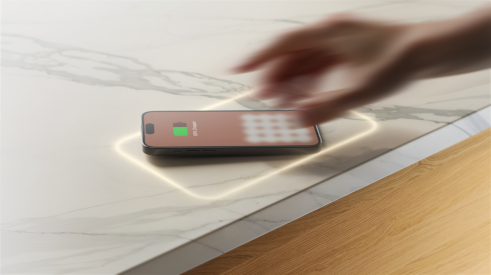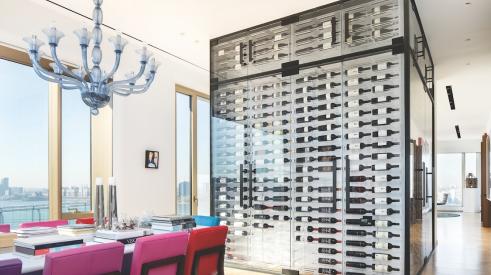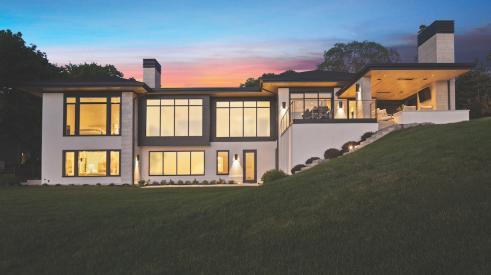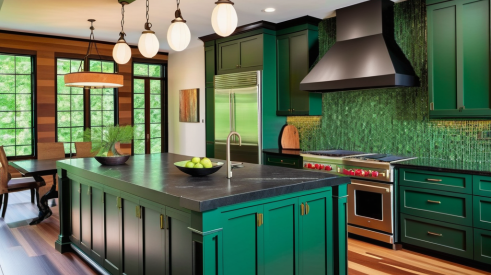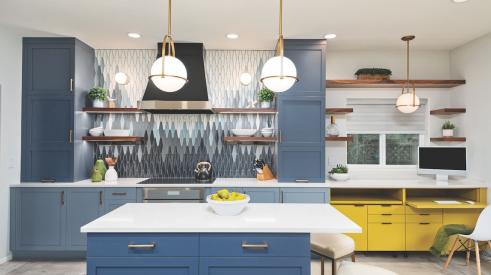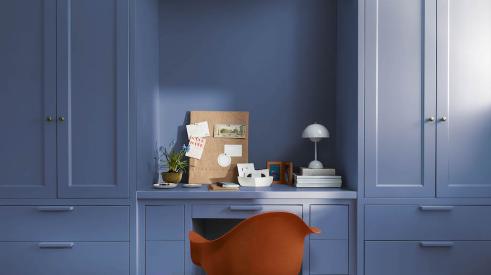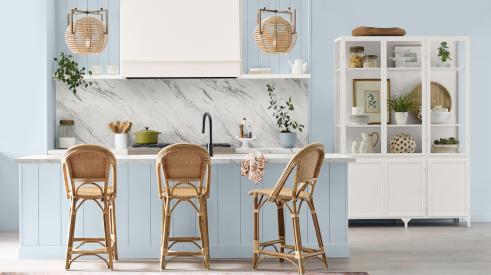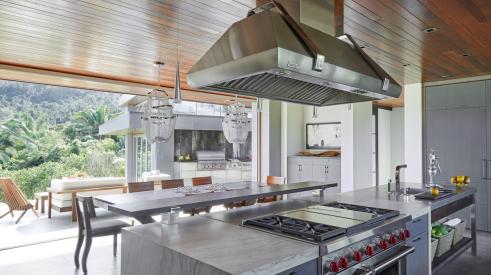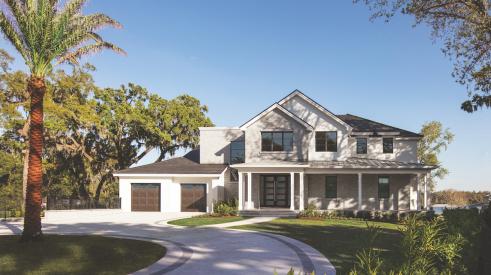What is the first thing that comes to mind regarding shower systems? Is it the plumbing and mechanical side of a bathroom shower, or is it a spa style shower with multiple heads, steam, chromatherapy, and water falls? Both are correct. You can’t have the second without first understanding the mechanics.
Today’s shower systems offer many options. First, there is a standard, single shower head controlled by a pressure balance valve (PBV). Starting from this point, there are still a number of options available. You can add a hand shower using a shower arm diverter, or wall diverter. This gives your clients more options. You can also suggest a wall bar to adjust the height of the hand shower. This is particularly relevant for someone with special needs, be it height or handicap.
On the fun or more luxurious side of things, you can go with up to two shower heads, but that would be the max with a PBV. PBV’s are limited in the amount of water that it can handle, usually 5 gpm (gallons per minute). When you want to do more, you must use a thermostatic valve with volume controls. Depending on the size of the therm valve and your water pressure, you can get up to 22 gpm. (Now that will get you wet.)
There are a number of considerations when specifying thermostatic over PBV. Here are the two major differences between PBV’s and thermostatic valves.
1. PBV’s only regulate pressure, not temperature. A thermostatic valve will regulate both. This means that as you use up your hot water with a PBV, the water coming out of the shower head will keep getting cooler. For a five-minute shower with a single head, this is not a big deal. Once you add more shower heads, the water will cool much faster.
2. A PBV starts from the off position and moves from cold to hot, always full force (no volume control), a thermostatic valve will only control the temperature and has no control over the water volume. You will need to add shuts offs, commonly referred to as volume controls. The more you use, the more you can customize the amount of water coming out and from where. Volume controls give you the ability to use more than one shower head at a time. With a PBV you would use a diverter to switch between shower functions.
Now, let’s get to the good stuff! When it comes to designing custom showers, you are only limited by your imagination (as well as water supply to the home and plumbing codes). It is great to dream big. And custom showers have never been more popular. Some simple things to check when you are looking to put in a custom shower.
1. Make sure you will have enough hot water. Do you need to go with a bigger water heater?
2. Do you have enough pressure? Is there enough water supply? It may be necessary to increase the pipe size going to the bathroom.
3. Are there code restrictions to be considered? It is always a good idea to work with a decorative plumbing showroom in your area for the best information. They are usually the most up to date with local codes and have the most experience when it comes to designing plumbing systems for custom showers.
Some systems are easier to install than others. From the all-in-one, column-style showers, to the multi-piece custom shower, most shower systems require a detailed drawing so all trades involved understand what needs to be done. This is not limited to carpenters and plumbers, but tile, HVAC and electric. Yes the iPod has made it into the shower and don’t forget the steam, the rain shower, the speaker system, the TV, the list goes on. There are few limits to what can go into today’s shower.
Drainage should also be considered. The more water coming out at one time the larger the drain you will need. I often recommend either two drains or the new trough style drains. The trough drains can give more options when it comes to construction and tiling.
When deciding where to place the shower heads or water features, there are many factors to consider: The needs of the client, where the spray will hit, can I turn the shower on without getting drenched or will the water go through the space between the door and the panel (or wall), is there enough room for the plumber to plumb and the framer to frame? Proper design is crucial to make sure the finished product meets expectations.
Paul Greenspan has been working in the kitchen & bath Industry for more than 25 years. He was first introduced to decorative plumbing at Community Home Supply in Chicago. In 1997 he opened his own award-winning decorative plumbing showroom in Milwaukee. In 2007 he successfully sold the business. Paul has been an active member of the kitchen and bath industry and has held local and national positions with the NKBA and the Bath and Kitchen Buying Group. Paul has given a number of seminars on decorative plumbing and contributed to numerous articles in national magazines. He currently works for Graff Faucets.
What you need to know about today's shower options
Add new comment
Related Stories
This New Tech Turns Any Countertop into a Wireless Charger
FreePower for Countertop has swept awards for its innovation—and the company claims installing it is "as straightforward as cutting a sink"
Designing, Building, and Installing a Luxury Custom Wine Cube
An 11-foot wine cube enveloping a pantry is the stand out feature of this customized New York penthouse
Marvin Releases Switchable Privacy Glass Window
The privacy glass windows can be purchased from Marvin's Direct Glaze windows
Building A Small Projects Division from the Ground Up
Through hard work and careful strategy, Harth Home Services has seen big growth
Client Design Choices in the Time of Social Media and AI
Social media speeds up the trend cycles, and now artificially created images are falling into homeowners' hands
Design Trends to Watch in 2024
What’s in and out for the upcoming year? Remodeling designers share insights
Insights for Designing Outdoor Kitchens
Was the pandemic-fueled thirst for outdoor kitchen remodels and additions a fluke, or is it here to stay? Plus: The top design considerations for outdoor kitchens
Home Run Remodeling Lessons: The New American Remodel 2023
A final look at The New American Remodel 2023



